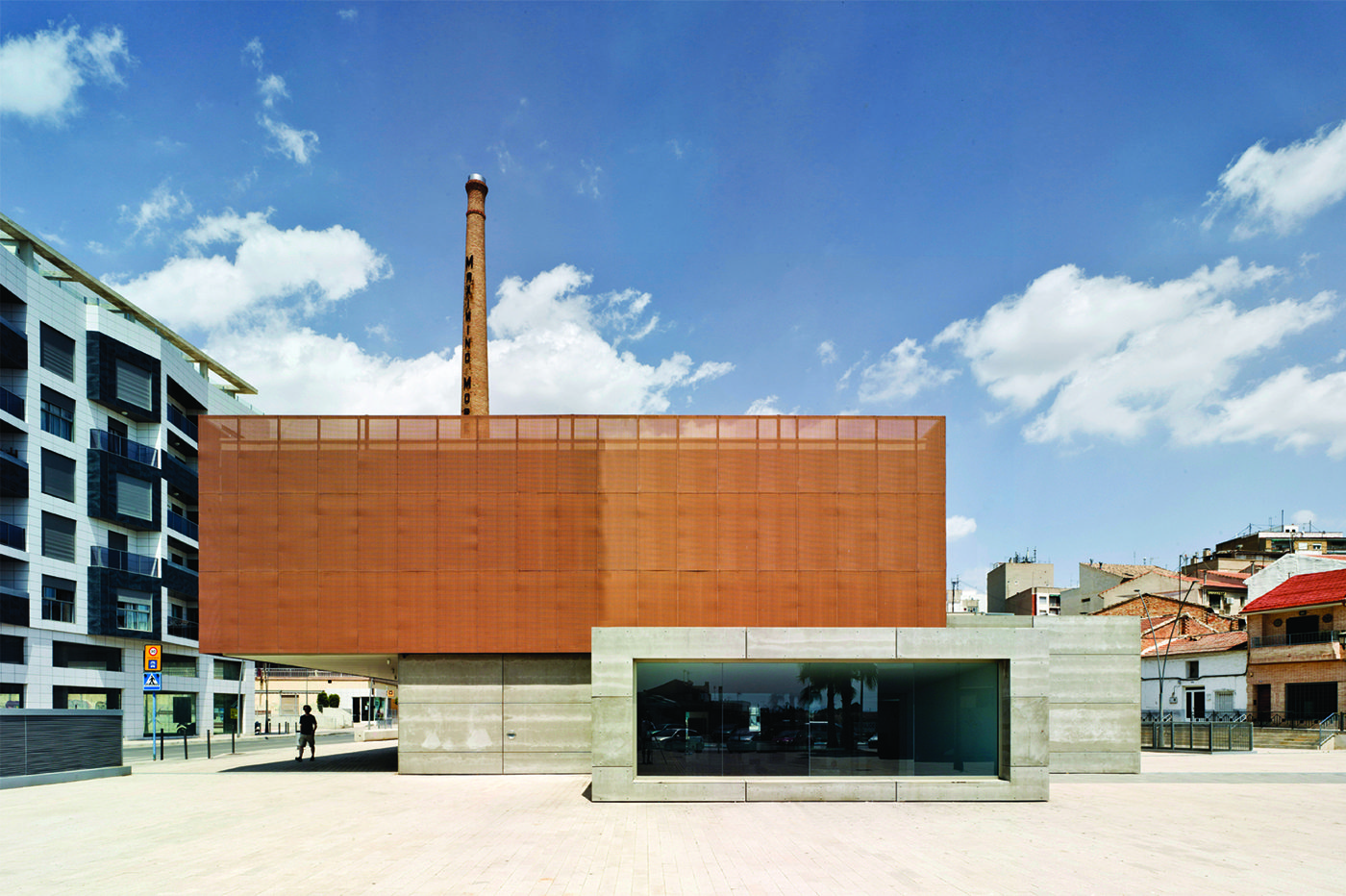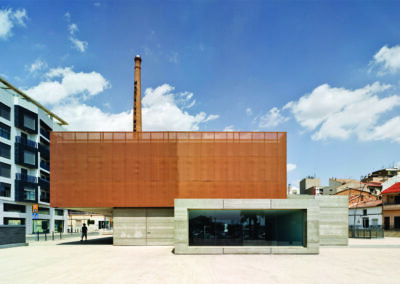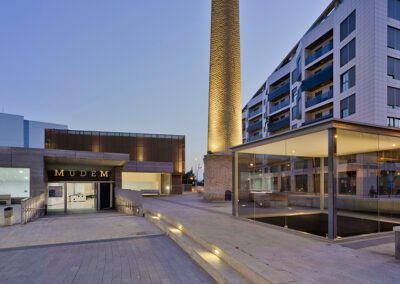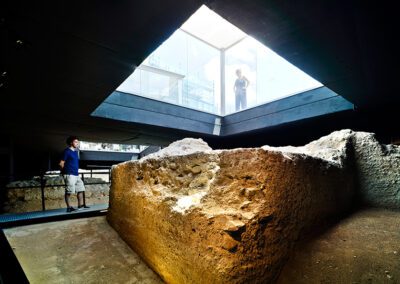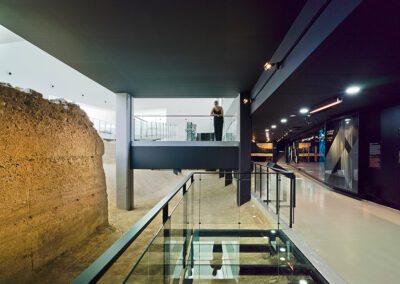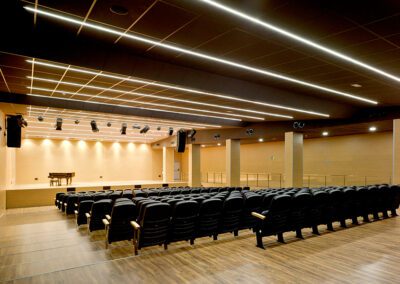The archeological museum, Museo del Enclave de la Muralla (MUDEM) in Molina de Segura, Spain, is situated at the convergence of industry, agriculture and a growing residential neighborhood. The site once occupied by Maximino Moreno factory was demolished to make way for new residential development. The clearing of the industrial past revealed the unexpected existence of the old city wall from the 12th century. The dimensions and monumentality of the remains, about 130 linear meters of elevations and foundations, generated an opportunity for negotiation of the liminal space bound by two urban strata: the old city of 12th century and the new city of the 21st century. The challenge of the design was to protect and project the archaeological remains onto the strata of the contemporary city. Instead of performing a literal recreation of the wall, our interest was in sculpting the most characteristic archaeological elements into the new plaza and creating a new public space for the city while at the same time generating a connection between the architectural concepts of the tectonic and stereotomic.
This link became evident in the demarcation of the towers of the old wall in the plaza. The rupture of the physical limit and the introduction of the visual connection between above and below. At the lower level, the wall becomes the spatial organizer, delineating space through the concepts of ‘extramural’ and ‘intramural’. Outside the wall, ‘extramural’ the space is open, offering the visitor an area for contemplation, while inside the wall ‘intramuros’ the space is subdivided into the program that serves the museum. The horizontal organization is complemented by a sectional organization through the remains of the towers. During the day, the skylights, serve as light wells reinforcing the interior matter while chiseling out the past that had been hidden for so many centuries. At night, these same skylights are inverted and define the cities new urban space that is now illuminated by the stratum of the past.

